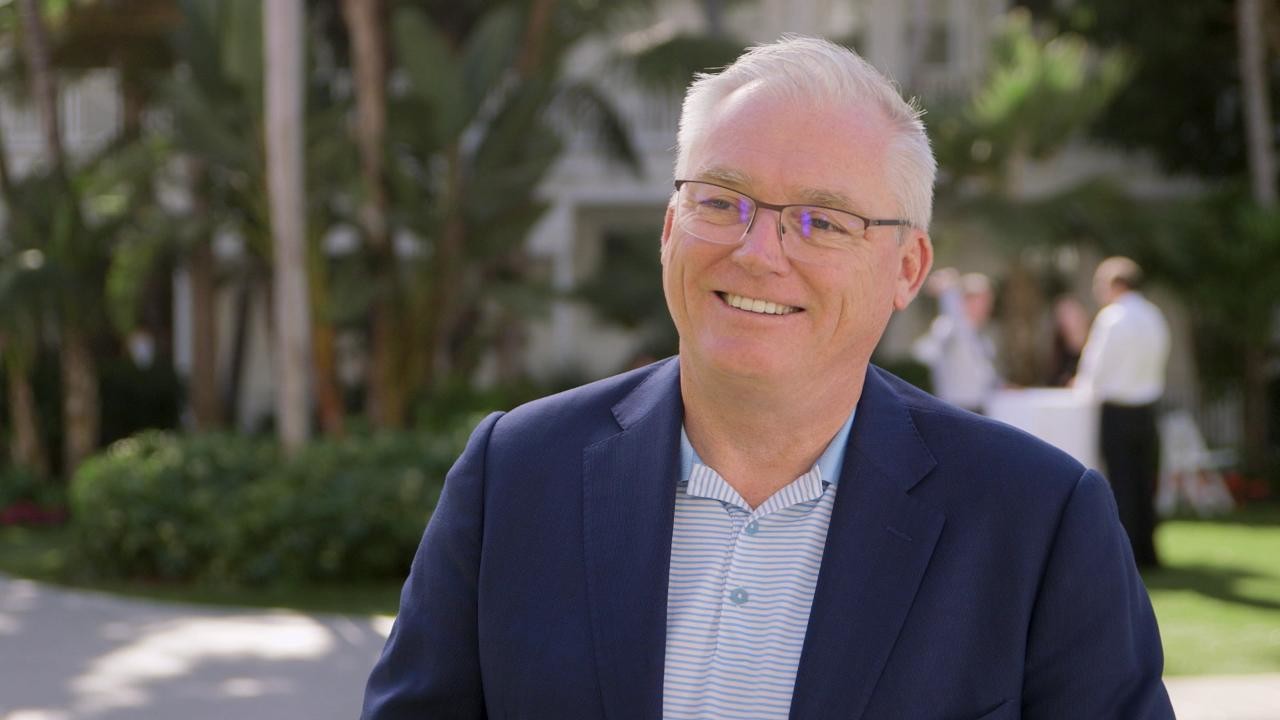Are You Investing In Women?

From Practicing Law to Impact Investing
When Joe Keefe made a mid-career move from practicing law to finance, it was still in the early days of socially responsible investing. Keefe recalls how the move itself was inspired by a book he had read by David Landes, The Wealth and Poverty of Nations, which made the argument that a nation’s growth and development potential is tied to the status and role of women. He recalls thinking that what applies to an economy or a country should transfer to business, “It seemed to me that the same logic applied that holding back half of the human race was shrinking your talent pool. [It] was discriminating not only against human beings but against new ideas, good ideas, discriminating against innovation and so forth and that if investing in women could lift up society then it could probably lift up companies too.”
In 2005, Keefe decided to test the idea. He joined Pax, an investment firm which had created the financial industry’s first socially responsible fund in 1971. Two years later, as CEO of Pax World Funds, his first acquisition, was a little known firm in California that had launched the Women’s Equity Fund which invested in companies that are better for women, “I knew they were a small fledgling fund and they didn’t have much finance. And you know, we should buy them. That fund has gone through some changes and it’s now the Pax Ellevate Global Women’s Index Fund. …Of the companies in the fund, 99% have two or more women on their board and 91% have three or more women on their board. Women hold 35% of board seats and 29% of senior management positions among companies in the Fund vs. global averages of 24% and 17% respectively.”
Getting Investors on Board by Leveraging the Research

It was a challenge getting investors on board when they first started out. “You have to understand that there was never a fund of this kind before. There was no ready-made market, no demand, for such a strategy. But there was some early research suggesting that companies with more women in leadership deliver better financial results over the long term,” says Keefe.
Though previous studies had shown that diversity had a positive impact on the bottom line, the first study that showed a positive correlation between more women in leadership and financial performance came out in 2004-05 from the research firm Catalyst, showing that Fortune 500 companies with the highest representation of women in their top management teams had a 35% higher return on equity and a 34% higher total return to shareholders. This was followed by a 2007 Catalyst study showing that companies with higher representation of women on their boards performed 53% better than those with the least number of women on their boards. And a 2008 study by McKinsey found that companies with greater numbers of women rank higher on dimensions such as leadership, accountability and innovation in addition to having above average earnings and valuations.
As more and more research validated their approach, Keene says, they decided to focus on it in marketing the fund, “we never stopped talking about the research because we knew that was the key to the underlying investment thesis: that the companies in our fund have a potential performance advantage because gender diverse leadership teams make better decisions and provide better oversight and governance than a bunch of white males (or any homogeneous group, really).”
But the financial services industry, dominated by white males, was slow to see this. So, in identifying investors for the fund, Pax focused on women, “because the typical male financial advisor with a practice chock full of male clients was not going to be much help to us – it seemed unlikely they would “get” the strategy or see the opportunity. We focused on reaching women advisors and women investors, and to a great extent that’s what we continue to do,” says Keefe.
Keefe also made sure he surrounded himself with smart women. Among them Sallie Krawcheck, a veteran in the financial services industry and chair of the Ellevate network, a membership organization for empowering women professionals. “Forming a partnership with Sallie Krawcheck and Ellevate was a game changer. I understood that Sallie had a following, and tremendous credibility around these issues, and frankly could open doors and reach people – particularly women in finance and other women professionals – whom I could not easily reach.” Keefe says.
Building the First Global Index of Companies that Empower Women

For the first seven years, the Pax World Global Women’s Equality Fund, was an actively managed fund that focused on investing in companies with more women in leadership. This meant that in selecting stocks the portfolio manager also considered other factors such as price/earnings ratio, return on equity, earnings growth, free cash flow, and so forth. However, Pax’s senior leaders became concerned that the other factors besides gender played a role “and obscured and perhaps neutralized the contribution that the gender factor was making to fund performance.”
The company eventually concluded that their investment thesis, that companies that advance and empower women are positioned to deliver stronger financial performance over time, couldn’t be proven through such an actively managed portfolio approach. “The investment thesis really called for a broader index-based strategy where the universe of stocks is distinguished, vis-a-vis the market as whole, by its gender leadership.”
Keefe says the only issue was that a global index that focused on companies with women in senior leadership positions did not yet exist. So in June 2014, Pax set out to build such an index, which is comprised of the top 25% of companies (approximately 400 companies) within the MSCI World Index based on representation by women in senior management and on their boards, and then investing in those companies, “In building the Index, and in launching the Pax Global Women’s Leadership Index Fund, we were now able to do an apples-to-apples comparison to the market as a whole, and to measure the advantages and capture the returns associated with gender diverse leadership.”
Once the index was launched, the fund’s focus on companies with the most women in senior leadership became even more pronounced by overweighting the gender diversity factor within an Index that already consists of leaders in in gender diversity. The new investment approach seems to have paid off. Since the change, the fund has outperformed the market for the last five years and is in the top 25% of funds in its category, getting a four-star rating on Morningstar. “It proves in real time with real money that companies with women in senior leadership positions actually perform better,” says Keefe.
Beyond Pax’s investments in companies with women in leadership positions, the company looks to influence corporate policies and behavior, “We’re an actively engaged shareholder. Across our funds, we vote against all male board slates and we generally will not support a full board slate unless it includes at least two women [the average size corporate board has nine members]. Since 2010, we have voted against over 1,100 board slates due to insufficient gender diversity. In 2011, we launched a “Say No to All-Male Boards” campaign encouraging [our] investors to join us in this effort.” Keefe points a significant win in 2016 when they filed a shareholder resolution with Apple. “asking the company to do a study and disclose their gender pay ratio. And Apple agreed to do that.”
Investing in the #MeToo Movement

As the #MeToo movement gains strength, and women all over the world are fighting to be treated with dignity and for equality in the workplace and beyond, Keefe believes that investors can be part of the solution, “By investing in companies that advance women, we can make a difference. That difference will be felt over time across a range of issues, from reducing the gender pay gap to reducing sexual harassment and violence, to advancing equality and opportunity,” he says.
The assumption that investors really can make a difference is ultimately what is fueling not only the growth of this fund but also the growth of sustainable investing, more broadly. Keefe’s work to build a company that’s focused on investing in women has similarities with other social movements. The famed community organizers in the civil rights movement looked to level the playing field in our society by bringing like-minded people together and creating collective strength. In today’s world where companies are legally treated as people and control much of the influence in our society, Keefe shares the same purpose as these leaders. Except he is building community in a different way–by connecting companies of shared values and capturing their voice in the form of investment, and giving them collectively the power to actually make an impact.







